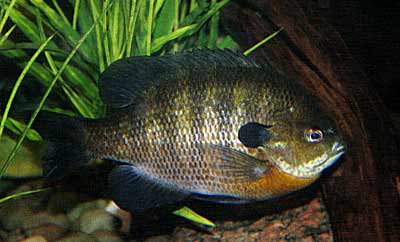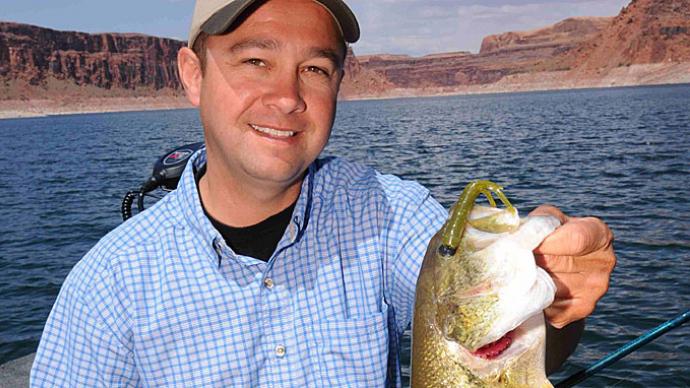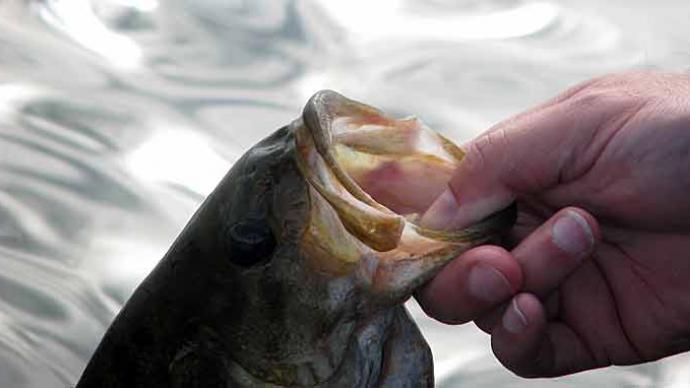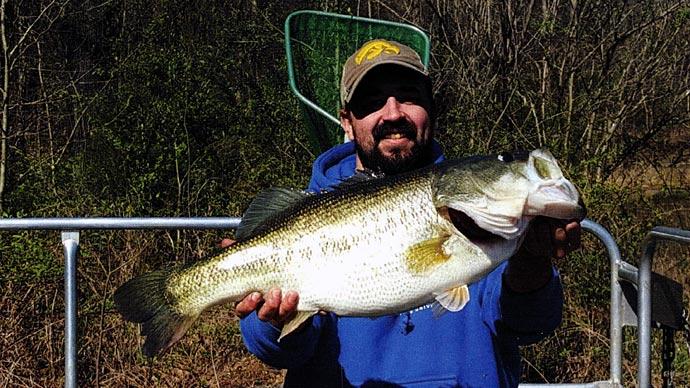
In the last year we have looked at several recent studies related to the spawning of several species. This time we solve a puzzle about when there is little to no spawning of a species. Keep in mind that fish senses, whether physical or biological, are likely similar in multiple species, so what goes on in bass and yellow perch may also exist in other pond fish species.
One study titled Factors Influencing Nest Survival in Florida Bass by Z. Slagle and S. L. Shaw in Transactions of the American Fisheries Society 146:696-702, 2017 Volume 146, 2017-Issue 4 ) © American Fisheries Society 2017, gives insight on differences in bass spawning. The survival of both Largemouth and smallmouth bass offspring can depend on a number of physical and biological factors, including the size and age of the guarding male, bed fishing pressure, and environmental changes during the nesting period. Many nest attempts fail, and hatchling abandonment is common due to storms, sudden temperature changes, angling, and nest predation. If the male bass abandons the brood (or is fished or runoff off of the nest), the brood is unlikely to survive long. If the guarding male is removed, you have likely eliminated his hatchlings from increasing the bass population. This was previously noted as a tool in reducing bass recruitment and overcrowding.
However, what about the opposite problem—little to no bass spawning/recruitment? We don't see this as often, but it does happen and can unbalance populations quickly if not addressed. The question asked is what is causing this problem? The bass are in good condition and the water is fine—why are there no little bass? There were no cold snaps or large-scale water changes so what happened to my bass? A hint, note in the study (above paragraph) the use of the term "physical and biological factors". What possible factors are those and how do they arise?
A second hint was recently discussed in, Chemicals Released by Predation Increase the Growth Rate of Yellow Perch, Perca flavescens by T. P. Barry, G. K. Dehnert, P. D. Hoppe and P. W. Sorensen, Journal of Fish Biology (2017) doi:10.1111/jfb. 13475, online wileyonlinelibrary.com, where water-soluble factors associated with walleye predation on either yellow perch or fathead minnows markedly increased the early growth rate of yellow perch. The findings suggest that yellow perch possess an inducible growth-promoting mechanism regulated by water-borne chemicals. Note the "water-borne chemicals" that can be sensed by the fish.

In other studies, it has been documented fish that are caught and released emit a warning signal chemical that other fish pick up on and causes them to quickly quit biting. In addition, other works show that male bluegill can chemically identify (smell) and distinguish their fry from those of others. So, we know through more recent studies that fish readily produce and use chemical signals for various purposes.
That leads to an older study, Behavioral Suppression of Spawning in Largemouth Bass by Interspecific Competition for Space Within Spawning Areas by Stephen Lee Smith in Transactions of the American Fisheries Society 1976, No. 6 pg. 682, which notes the inconsistencies in prior studies on this exact question. The results from these studies were mixed, with some indicating an excretion and build-up of a hormone-like repressive factor by overcrowded sunfish and forage species, and others finding a link to physical factors such as aggressive interaction with forage species, primarily affecting the male bass, which was effective in suppressing the spawning behavior sequence even before nest building. These are the probable "physical and biological factors" to spawning suppression.
Given the age of these studies and more recent studies on fish sensing hormone-like water-borne chemicals, I tend to believe it is a combination of several factors. The sight of swarms of harassing forage species and the chemical suppression factors released by them can suppress bass reproduction. Further, it appears that this situation is more common in highly fertile waters.
Some of the findings discussed and noted in this study indicating which factors were present and found to be involved in spawning suppression are included below to aid you in management should you encounter the situation. Early on it was noted that Florida Largemouth bass failed to produce offspring in several eutrophic Florida lakes with large populations of sunfishes. It was further determined that reproductive failure was due to a refusal of the adult population to spawn, and was characterized in the female by the retention of enlarged, ripened ovaries long past the spawning period. Further note that the condition could be reproduced in hatchery ponds and reproductive suppression can be attributed to the excretion and build-up of a hormone-like repressive factor by overcrowded sunfish and forage species. Others documented similar reproductive failures at high population densities of the blue tilapia, but did not set out the mechanism of the repression. Other works have reported the failure of Largemouth bass to spawn in the presence of large numbers of sunfish, and concluded that failure was due to either sunfish predation on the eggs or to a repressive factor excreted by sunfishes that inhibited spawning. Still other studies found a link to physical factors such as aggressive interaction with forage species, primarily affecting the male bass without finding a link to chemical suppression.
The amount of fish used in one study was approximately 400 pounds per acre of bluegill and redear sunfish, an amount that was known to cause suppression of Largemouth bass spawning. It is interesting to note that 400 pounds per acre is about the amount of sunfish per acre found in a fertile pond or one using supplemental feeding. Techniques such as large-scale fish removal programs, spawning shelters, and supplemental stocking have been documented to help eliminate the problem. However, there is still not enough data to precisely determine the population densities or conditions necessary for suppression to become operative or which species of fish use this tactic. Management success of this problem may well depend on understanding how suppression works in conjunction with other complex fish community interactions, all of which impact the composition of fish populations.
When it comes to fish senses, many have yet to be identified and there is much to learn. We do, however, know fish use their senses in various ways, many of which we do not fully understand.
Reprinted with permission from Pond Boss Magazine



